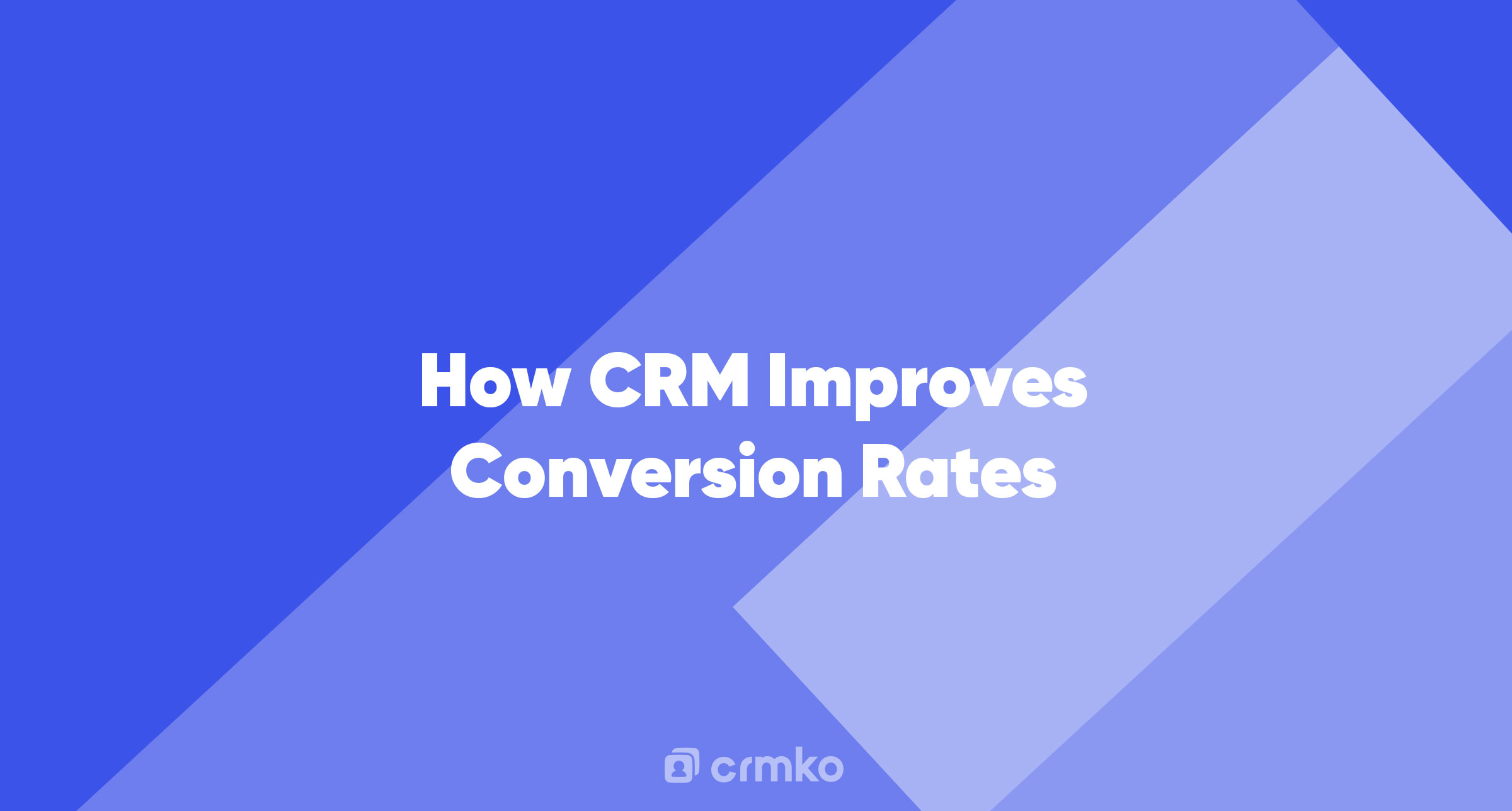In the competitive business landscape, companies are always on the lookout for tools and strategies that can give them an edge. One such tool that has proven to be a game-changer for businesses across industries is the Customer Relationship Management (CRM) system. While CRM is often associated with improving customer relationships and streamlining operations, its impact on conversion rates is profound. In this article, we will delve deep into how CRM improves conversion rates, offering insights and actionable takeaways.
Understanding CRM and Conversion Rates
Before diving into the specifics, it's essential to understand the two key terms: CRM and conversion rates.
CRM is a technology used to manage a company's interactions with current and potential customers. It uses data analysis about customers' history with a company to improve business relationships, focusing primarily on customer retention and driving sales growth.
Conversion rates, on the other hand, refer to the percentage of visitors (to a website, store, or any other platform) who take a desired action, such as making a purchase, signing up for a newsletter, or filling out a contact form.
The Role of CRM in Boosting Conversion Rates
Now that we have a foundational understanding let's explore how CRM plays a pivotal role in enhancing conversion rates:
- Data Centralization: CRM systems consolidate customer data in one place. This centralization ensures that sales and marketing teams have all the information they need to target potential customers effectively. With comprehensive data at their fingertips, teams can tailor their approaches, leading to higher conversions.
- Lead Scoring: Not all leads are created equal. CRM systems often come with lead scoring features, which rank leads based on their likelihood to convert. By focusing on high-potential leads, businesses can optimize their efforts and improve conversion rates.
- Personalization: In today's digital age, personalization is not just a luxury but a necessity. CRM systems store detailed information about each customer or lead, from their purchase history to their preferences. This data can be used to offer personalized experiences, which significantly enhance conversion rates.
- Automated Follow-ups: A significant chunk of potential conversions is lost due to lack of follow-up. CRM systems can automate follow-up processes, ensuring that leads are nurtured and engaged until they convert.
- Analytics and Insights: One of the most significant advantages of using CRM is the analytics it offers. Businesses can gain insights into customer behavior, track conversion funnels, and identify bottlenecks. These insights are invaluable in refining strategies and boosting conversion rates.
Benefits of Improved Conversion Rates Through CRM
Using CRM to enhance conversion rates offers a plethora of benefits:
- Increased Revenue: A direct consequence of improved conversion rates is increased revenue. By converting more leads into customers, businesses can significantly enhance their bottom line.
- Optimized Marketing Efforts: With insights from the CRM system, marketing teams can identify which strategies are working and which aren't. This knowledge allows for the optimization of marketing efforts, ensuring higher ROI.
- Enhanced Customer Satisfaction: Personalization and timely follow-ups, facilitated by CRM, not only improve conversion rates but also enhance customer satisfaction. A satisfied customer is more likely to be loyal and offer repeat business.
- Resource Efficiency: By focusing on high-potential leads and optimizing marketing efforts, businesses can ensure that their resources, be it time or money, are utilized efficiently.
Best Practices for Using CRM to Boost Conversion Rates
To make the most of CRM in enhancing conversion rates, here are some best practices to follow:
- Regular Data Updates: Ensure that the data in your CRM system is regularly updated. Outdated or incorrect data can lead to missed opportunities.
- Training: Ensure that your team is well-versed with the CRM system. They should know how to input data, extract insights, and use these insights to boost conversions.
- Integration with Other Tools: Your CRM system should integrate seamlessly with other tools, be it marketing automation platforms, email marketing tools, or analytics tools.
- Regular Review: Periodically review the CRM data to identify trends, successes, and areas of improvement. This review will ensure that your strategies are always aligned with your conversion goals.
Conclusion
In the quest for improved conversion rates, CRM emerges as a powerful ally. By centralizing data, offering personalization, automating follow-ups, and providing actionable insights, CRM systems play a pivotal role in ensuring that potential customers don't just remain leads but convert into loyal patrons. As businesses continue to navigate the competitive landscape, the role of CRM in boosting conversion rates will only become more significant.
